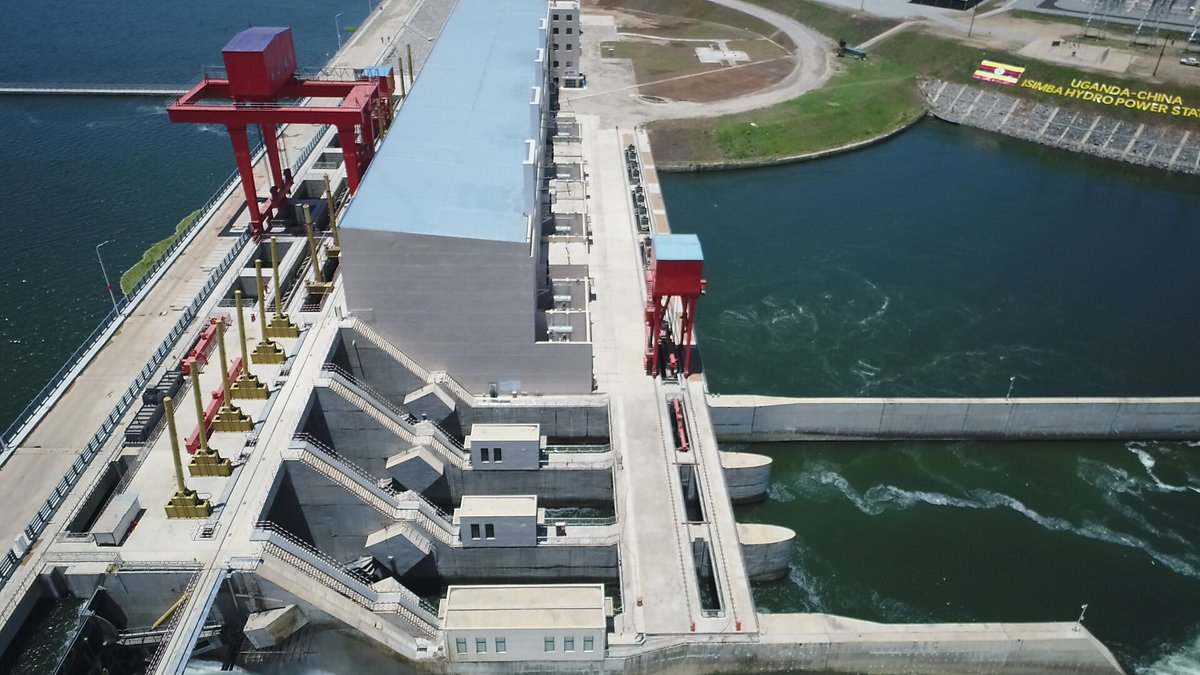The recently commissioned Isimba dam located at Nampanyi village, Kayunga district, envisions a robust industrial revolution that will require a stable and adequate power supply in a country that is on an economic path of transformation.
For Uganda to industrialise, availability of power will be key in the quest to spur its nascent industrial base. Isamba brings with it 183MW to the national grid from 984MW, making the total generation capacity of 1167MW. Before even the turbines started running, the dam had already created 3000 full-time jobs let alone the suppliers of construction materials such as cement, sand, steel, gravel, hardcore, timber etc.
Isimba project hired local people who benefited from skills transfer from their superiors. Construction of hydropower stations may not be the sole nostrum to stem power outages but also the quest for the middle-income status demands that the process of operations and maintenance continues to provide jobs to those assigned to keep it functional. Out of the 3,000 jobs created, 85% of whom were for Ugandans which created a trickle-down effect in the economy through the market system.
China International Water and Electric Corporation was the contractor and was supervised by Artelia EAU and Environment. The project was implemented by the Uganda Electricity Generation Company Limited (UECGL) and Uganda Electricity Transmission Company Limited(UETCL). For the first 15years, Isimba will sell the power to Uganda Electricity Generation Company (UETCL) at US cents 4.16 (sh155) per unit. However, after fifteen years, between the 15th and 38th period, a unit shall be costed at US cents 1.01 (sh37.5). This means that the Isimba Dam shall have one of the lowest power charges among all the power generators in the country.
READ MORE: President Museveni Commissions 183MWs Isimba Hydro Power Dam
The loan secured from China Exim Bank has a repayment period of 20 years, with a grace period of five years. After 38 years (2057) it is expected that the $482.5m (sh1.78 trillion) loan will have been fully repaid. The annual projected revenue from the plant is over $41.6m(sh150). Given a conducive and enabling policy and regulatory framework, this revenue base provides a strong financial foundation for UEGCL to operate efficiently and re-invest in the critical infrastructure needed to meet the national development plan11 and vision 2040 electricity generation capacity targets.
The project design of Isimba dam envisaged a bridge linking Kayunga and Kamuli. This will be a welcome gesture for the local traders who have been using dug-out canoes to transport merchandise across the river and others driving the longer route of over 4 hrs via Jinja to Kampala for the bulky goods for a distance of less than 10 minutes. This bridge is expected to be completed by 2020. This will play a crucial role in economic and social development. The dam will support value addition and increased productivity in the area through the rural electrification project across the districts of Kamuli and Kayunga.
From the industrial sector perspective, an additional 183MW on the national grid means that all the mega power consumers like steel product producers eg Roofings, cement manufacturers especially in the Tororo industrial cluster where many high power consumers are located are sorted. The importance of Isimba to industrialization can be seen in the consumption of Roofings. Its consumption is about 50MW, that means if the country has three industries equivalent to Roofings, all the generation installed capacity of Isimba will be wiped out. This is the major reason why power generation must be given priority.
During the state of the nation address last year, the president set to achieve a target of 17,000MW by 2028. Uganda’s installed capacity is 955MW with a gross domestic product (GDP) per capita of about $615(approx. sh 2.2m). Wealthy countries have invested heavily in electricity infrastructure. South Africa with a population of 56m people has an installed generation capacity of 46943MW with a per-capita GDP of $6268 (about sh23.21m) and per-capita consumption of 4198Wh. To achieve the 17000MW target of installed capacity, Uganda will require close to $51bn in new investments based on the average unit cost of $3m per MW of the hydropower projects underway.
The challenge is whether the country can afford to raise the huge funds while at the same time striking the delicate balance between public debt ceiling and the demands of other priority public sector investment like health, education, infrastructure etc. the government will need external support from development partners like world bank, inter-country joint investments, integrating regional electricity markets and floating government infrastructure bonds.
However, even if the country secures the investment funding, the question posed is the ability to pay back without causing a loan bubble. The answer lies in the ability to innovate ways of securing foreign finances like securitization of part of the anticipated oil revenues to access low-cost finances and circumvent the debt ceiling. The other way could be allowing the return on investment of the built dams so that over the years, we can accumulate enough money that could be ploughed back in new electricity generation infrastructure. With a good return on investment, funds can be mobilized through the listing on the stock exchange and attract private funding.
However, as we still grapple with transmission challenges and a narrow market base, it is hard to leave the power sector to the forces of demand and supply. High power tariffs without ceiling will affect the consumption if not regulated.




